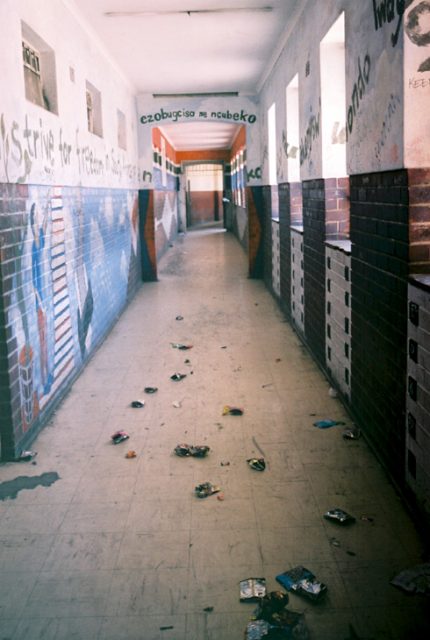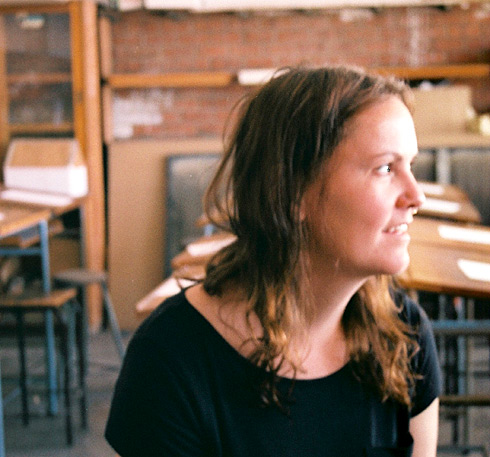
It has always been Prof. David B. Smith’s contention that the creative thinking skills used to make art can help in other areas of learning too.
For the past six years, the NSCAD professor has set out to find the proof of that assertion, at a high school in an economically disadvantaged neighbourhood in a country still struggling to find its feet post-Apartheid.
At Modderdam High School in Bonteheuwel, South Africa, he and researchers—including NSCAD students on four months’ placements and program coordinator Roderick Sauls—have followed the same group of learners from Grade 9 through to Grade 12. Through the students’ four-year journey through high school, they’ve staged “creative learning interventions”—creating art projects arising from assignments in other classes, including Mathematics, English, Africaans, and Life Orientation.
Called the NSCAD Art in Schools Initiative, the program has followed one cohort through to graduation, and is now involved with a second cohort of students currently in Grade 9.
“The goal is not to make a class full of artists,” says Prof. Smith. “It’s to use art as a tool to empower learners and to create a better community as a whole.”
The results of the first cohort are more than encouraging, he says. At a school with historically sky-high drop-out rates, 116 students graduated from high school out of the 324 students who started in Grade 9. That perhaps doesn’t sound great compared to Canadian schools, but it’s a definite improvement over the classes that have graduated in previous years, when typically only one in five students makes it through and finishes Grade 12 successfully. The overall grades of students in the followed cohort were significantly improved as well.

But “the qualitative data is even more remarkable,” says Prof. Smith. “Many said how much the program helped them in their studies and daily lives and that they think about things differently.”
The benefits are not only for students at Modderdam High School, but for the NSCAD students who have worked as research assistants.
“Students planning on participating in the Art in School project should come with few expectations and an open heart,” writes Adonika Clark, who is currently in South Africa. She describes the experience as challenging and eye opening.
“Facing poverty every day has caused me to rethink my responsibility as a citizen of the world, a process which has been both absolutely necessary and difficult,” she continues. “At Modderdam High School I often feel that I am learning more than the students. While the school is a very depressing place to be, the students are worth every minute. Our classes are generally quite relaxed and provide a moment of rest for the students during their hectic days, while also offering them exposure to new techniques and materials.”
Over the past six years, 11 students have gone overseas, working with the program while also having a chance to continue their own art practice with a studio space at the Department of Visual Arts at Stellenbosch University. Considered an exchange, off-campus study program or research assistantship, participating students receive up to 15 studio credits for the session (6 credits ARTS 3450 Off Campus Community Service Learning / Internship and 9 credits of ARTS 4000 level). While participants pay their NSCAD tuition, there are remunerated for their work as research assistants and external funding is in place to cover airfare, accommodations and living expenses.

NSCAD students Gillian Maraden Josey and Brea McAllister have recently returned from South Africa. Former students including Dylan Fish, Carrie Allison Goodfellow, Emma May and Craig Budovitch have gone on to artistic residencies, international travel, and graduate study after participating in the program.
“There are many benefits for our students,” says Joann Reynolds-Farmer, Coordinator, Off Campus, International and Advising. “The program has definitely influenced their next steps after NSCAD, and participants have created amazing opportunities for themselves.”
The applications for Winter 2017 and Summer 2017 will begin being reviewed on September 15th. Students with an interest in community-based projects and who are considering a career in art education are urged to apply.
NSCAD AiSI vid from David B. Smith on Vimeo

